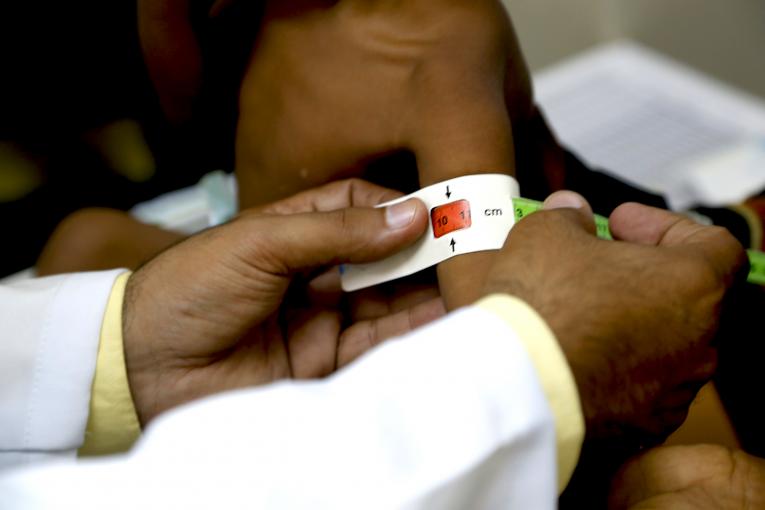Health
An Estimated 10.4 Million Children In The DRC, Northeast Nigeria, The Central Sahel, South Sudan And Yemen Will Suffer From Acute Malnutrition In 2021 – UNICEF

30 December 2020 – As 2021 approaches, UNICEF is deeply concerned for the health and well-being of 10.4 million children projected to suffer from acute malnutrition next year in the Democratic Republic of the Congo (DRC), northeast Nigeria, the Central Sahel, South Sudan and Yemen. These are all countries or regions experiencing dire humanitarian crises while also grappling with intensifying food insecurity, a deadly pandemic and – with the exception of the Central Sahel – a looming famine.
“For countries reeling from the consequences of conflicts, disasters and climate change, COVID-19 has turned a nutrition crisis into an imminent catastrophe,” said UNICEF Executive Director Henrietta Fore. “Families already struggling to feed their children and themselves are now on the brink of famine. We can’t let them be the forgotten victims of 2020.”
In the Democratic Republic of the Congo, an estimated 3.3 million children under five will suffer from acute malnutrition in 2021, including at least 1 million with severe acute malnutrition. These alarming figures are due to ongoing insecurity, the socioeconomic consequences of the COVID-19 pandemic, and limited access to essential services for vulnerable children and families.
In northeast Nigeria, more than 800,000 children are expected to suffer from acute malnutrition in 2021, including nearly 300,000 with severe acute malnutrition who are at imminent risk of death.
In the northwest of the country, the nutrition situation is even direr. Kebbi State is experiencing a chronic malnutrition rate of 66 per cent, more than 20 per cent higher than Borno State in the northeast. In Sokoto State, also in Nigeria’s northwest, close to 18 per cent of children suffer from wasting and 6.5 per cent suffer from severe wasting.
In South Sudan, The Integrated Food Security Phase Classification (IPC) update released earlier this month indicated a further deterioration of food security, with almost 7.3 million people – 60 per cent of the population – expected to be facing severe acute food insecurity in 2021. An estimated 1.4 million children are expected to suffer from acute malnutrition in 2021, the highest since 2013. Meanwhile, the number of children suffering from severe acute malnutrition is expected to increase from about 292,000 children this year to over 313,000 children in 2021.
The increase in household food insecurity and acute malnutrition among children is attributed to ongoing conflict and insecurity, and limited access to essential nutrition, health care and water, sanitation and hygiene services. Flooding in some areas in 2020 has exacerbated the already high level of acute malnutrition among children.
In the Central Sahel countries of Burkina Faso, Mali and Niger, intensifying conflict, displacement and climate shocks will leave an estimated 5.4 million people struggling to meet their daily food needs during the next lean season. Acute food insecurity has increased by 167 per cent in Burkina Faso, 34 per cent in Mali and 39 per cent in Niger, compared with the five-year average.
The number of children suffering from acute malnutrition could rise by 21 per cent. This would bring the total number of malnourished children in the three countries to a staggering 2.9 million, including 890,000 children suffering from severe acute malnutrition.
Across Yemen, over 2 million children under five years of age suffer from acute malnutrition, including nearly 358,000 with severe malnutrition – a number that is expected to rise. In 133 districts in southern Yemen, home to 1.4 million children under five, recent analysis reveals a near 10 per cent increase in children with acute malnutrition between January and October 2020. This includes a more than 15 per cent increase – nearly 100,000 children – in cases of severe acute malnutrition. A similar analysis is being finalized for northern Yemen and alarming results are expected there as well.
In all these countries and beyond, UNICEF is urging humanitarian actors on the ground and the international community to urgently expand access to and support for nutrition, health and water and sanitation services for children and families.
Despite challenges in the context of COVID-19, this year UNICEF and partners have continued to deliver lifesaving assistance to the most vulnerable children and their families in the hardest to reach areas through adjustments on the existing programmes to maintain and increase access. UNICEF has appealed for more than US$1 billion to support its lifesaving nutrition programmes for children in countries affected by humanitarian crises over 2021.





